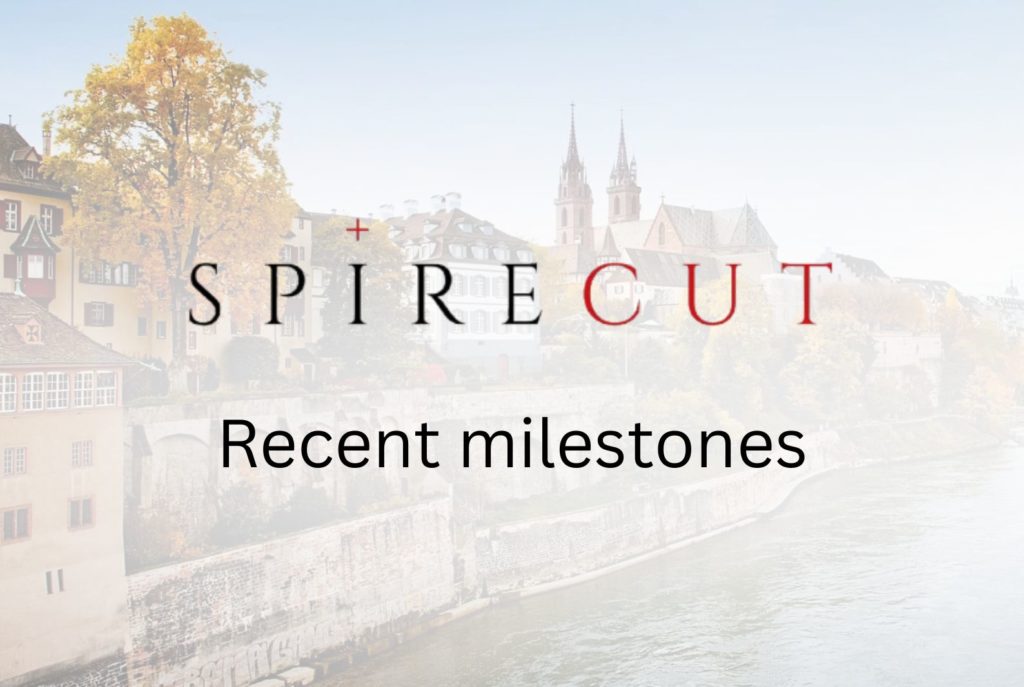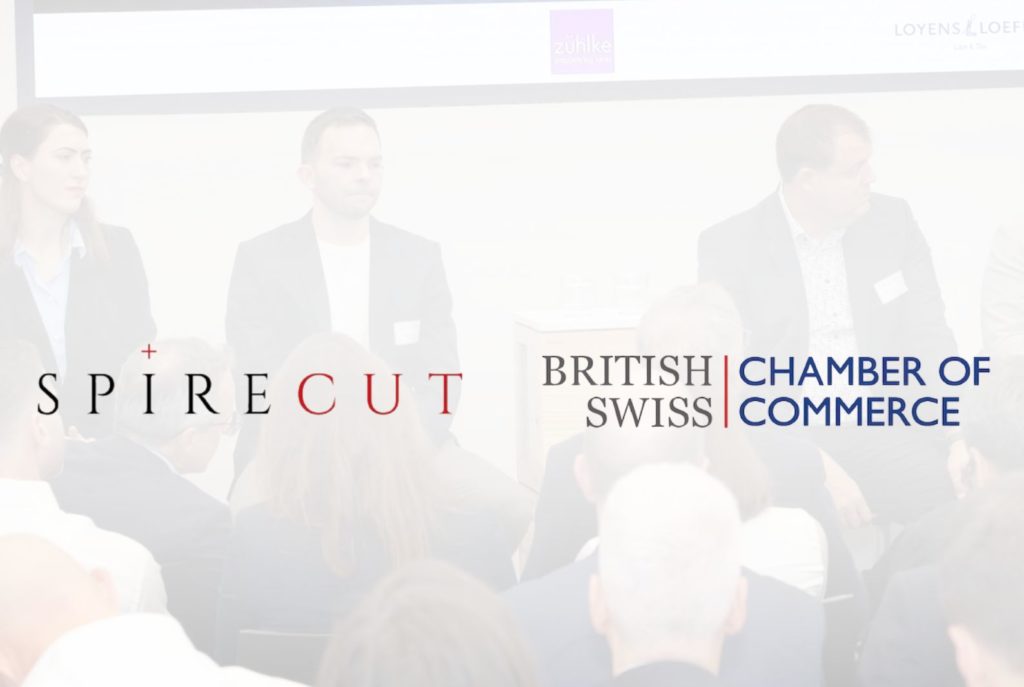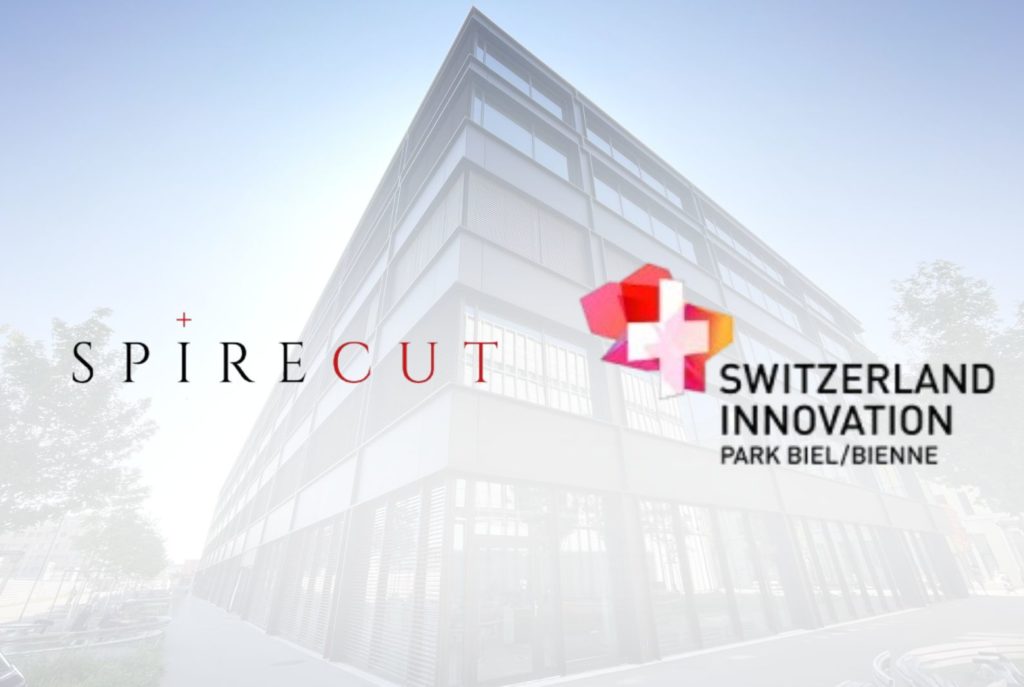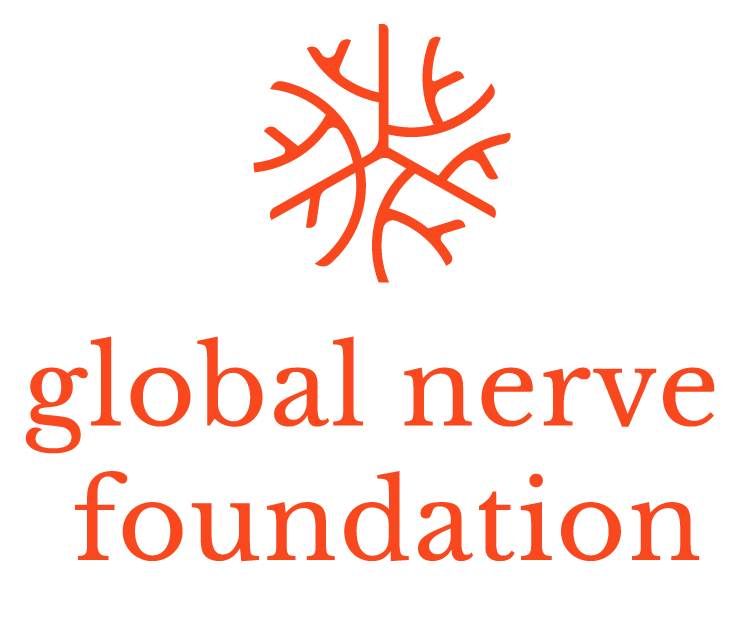No skin incision,
Safe surgery,
Better outcomes
We commercialise Sono-Instruments® to treat carpal tunnel syndrome and trigger finger.
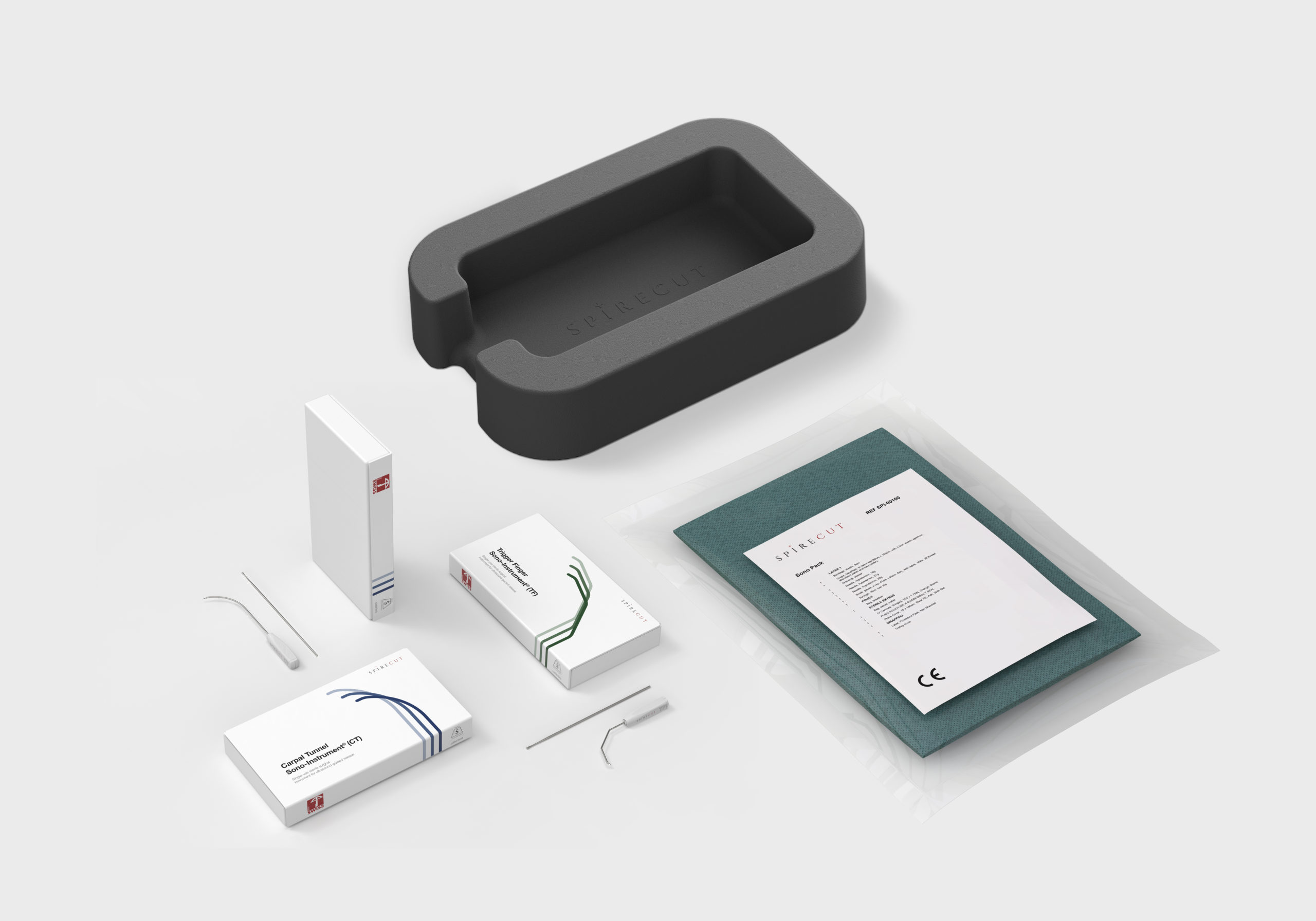

Access to this website is restricted to healthcare professionals.
Access to this website is restricted to healthcare professionals.
No skin incision,
Safe surgery,
Better outcomes
We commercialise Sono-Instruments® to treat carpal tunnel syndrome and trigger finger.
Spirecut’s Sono-Instruments® are a simple and efficient solution to treat carpal tunnel syndrome and trigger finger.
Our ultrasound-guided, incision-free instruments improve hand surgery standard of care and accelerate patient recovery.
Benefits
Safe surgery
The procedure requires ultrasound guidance under local anaesthesia.
Patented instruments
Our patented design enhances the visibility of the cutting extremity on the ultrasound screen.
Percutaneous surgery
Our patented surgical technique requires no skin incision, stitches, or dressing.
Quick surgery
The procedure takes a few minutes to complete with minimal instrumentation.
Early return to daily activities
After the procedure, patients can resume their daily light activities.
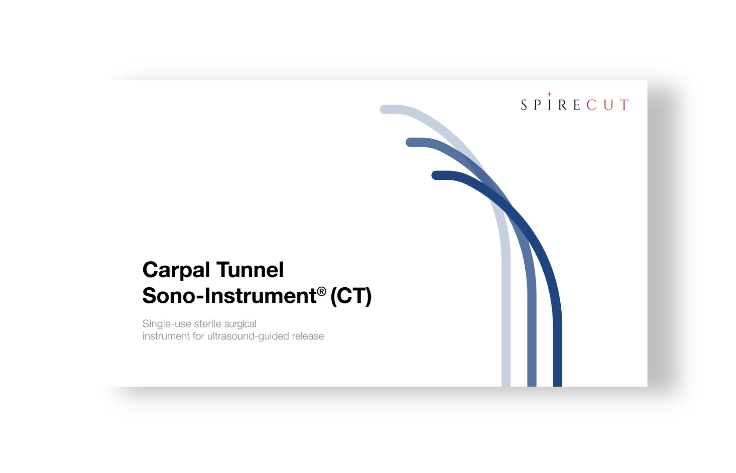
Carpal Tunnel Sono-Instrument® (CT)
Carpal Tunnel Sono-Instrument® (CT)
The Carpal Tunnel Sono-Instrument® (CT) is a simple and efficient solution to treat carpal tunnel syndrome.
Trigger Finger Sono-Instrument® (TF)
Trigger Finger Sono-Instrument® (TF)
The Trigger Finger Sono-Instrument® (TF) is a simple and efficient solution to treat trigger finger.

Explore our latest news and insights.
Patient Testimony
Patient Testimony
About Spirecut
Spirecut is a Swiss MedTech company specializing in minimally invasive, ultrasound-guided instruments for trigger finger and carpal tunnel syndrome. Our patented Sono-Instruments® offer precise procedures, faster recovery, less pain, and no scarring. We also commercialize Sono-Bath®, a sterile liquid immersion system for enhanced ultrasound clarity, and Sono-Pack®, an all-in-one sterile procedural kit. Spirecut’s products are available worldwide through a network of distributors.
Frequently asked
questions
Frequently asked questions
Our benefits are:
- no skin incision
- no dressing or scar after the surgery
- immediate return of patients to their daily activities
- two patented instruments, one for carpal tunnel syndrome and one for the trigger finger.
Percutaneous surgery using Spirecut Sono-Instruments® is cost-effective, but a high-frequency ultrasound (minimum 15MHz) is necessary with an adapted probe (using a hockey-stick probe is convenient for trigger finger surgery).
Several advantages result in the surgery being cost-effective:
- the rapidity of the operation,
- the surgeon can operate without an assistant and without a set of surgical instruments that need to be re-sterilized
- the fast return of the patient to her/his professional activities.
The procedure is far safer than traditional surgery and, more importantly, far less invasive. A dressing is necessary for a few hours. The patients have almost no visible trace of the surgery and can return to their daily light activities the next day (wash their hands and return to life with no bandages or stitches to be removed).
Most patients regain normal hand use within a few days. Light activities can often resume the next day, and full recovery usually occurs within one to two weeks — significantly faster than with traditional surgery.
The procedure should be performed under local anaesthesia.
It is possible to operate simultaneously on both hands for bilateral carpal tunnel syndrome, multiple trigger fingers, or a carpal tunnel and a trigger finger. No dressing is required, except on the day of the surgery.
Carpal tunnel syndrome is typically treated by releasing pressure on the median nerve. Traditionally, this involves open or endoscopic surgery. With Spirecut’s ultrasound-guided method, the procedure is performed through a micro-entry point under real-time ultrasound visualization — no incision, no stitches, and minimal recovery time.
Although there is no skin incision, only a minor puncture, the surgeon cuts the same ligament as for the open/endoscopic surgery. As a result, the operated area will likely cause pain for several weeks (sometimes months) after the surgery. This postoperative symptom is called pillar pain and occurs after all modes of carpal tunnel release. It is related to ligamentous healing, and in some patients, it may preclude heavy manual work for a prolonged duration.
There is no scar resulting from this surgery.
As with any medical procedure, there are risks, but they are very limited. Because the procedure is guided by ultrasound, important structures such as nerves and vessels are clearly visible, reducing the likelihood of complications such as scarring or stiffness.
Costs vary depending on the clinic and country. In most private clinics, the total cost is comparable to or lower than that of traditional surgery because it avoids the use of an operating room and general anesthesia. Your surgeon or local clinic can provide an exact estimate.
Local anaesthesia is preferred because of decreased morbidity. It allows dynamic perioperative testing (before, during and after the release) of actively movable structures like the flexor tendon(s) in the carpal tunnel and trigger finger/thumb. Moreover, under local anaesthesia, dysesthetic pain during the procedure may alert the clinician to the vicinity of a nerve.
No surgery is without risk. The surgeon must be experienced in hand surgery and sonography and must have followed lab manual-skills training with associated instrumentation before the procedure. The surgeon is advised to review carefully the instructions for use before performing any surgery.
SPIRE is the acronym of Swiss Percutaneous Instruments, allowing Rapid and Efficient Surgery. SPIRE evokes also the similarity of the conical shape of the instruments; CUT is a reminder that our instruments allow a quick and efficient release of thickened pathological tissues like the fingers’ annual pulleys or the transverse carpal ligament.

